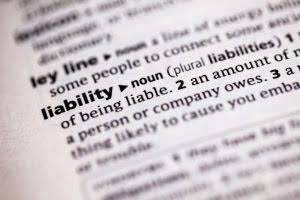Internal Controls in Accounting: Definition, Purpose, and Key Types
- Home
- Internal Controls in Accounting: Definition, Purpose, and Key Types
- 26 Aug, 2021
- usama786 usama786
- No comment
Internal Controls in Accounting: Definition, Purpose, and Key Types

This ledger account control account plays a crucial role in tracking and managing the company’s stock levels. An increase in this account reflects an acquisition of inventory, while a decrease indicates that inventory has been sold or used. In essence, control accounts are an essential tool for any business firm looking to effectively manage its finances and meet external regulatory demands.

The Control Account – A Simple Guide for Small Businesses
- Before you start, I would recommend to time yourself to make sure that you not only get the questions right but are completing them at the right speed.
- A control account balance that doesn’t match the sub-ledger subtotal should be corrected.
- Download our data sheet to learn how you can manage complex vendor and customer rebates and commission reporting at scale.
- For example, if the sales account balance is transferred, the sales account will be debited, and the sales control account will be credited.
- Control accounts function as an inherent component in the broader accounting system architecture.
- As only a section of the accounting system is self balancing such a system if sometimes referred to as a sectional balancing system.
A company’s unique profile determines the types and numbers of control accounts, including accounts payable and accounts receivable. Keep reading to learn more about the control account’s meaning, purpose, use, advantages, and limitations. In a small business the accounts can be kept in one accounting general ledger and a trial balance can be extracted from that ledger.
Financial Automation Data Sheet
- A healthcare organization uses biometric time tracking, separation of duties, and managerial oversight of overtime.
- They help auditors verify accuracy as they summarize transaction information in a manner that can be cross-checked with pertinent sub-ledger balances.
- It keeps track of the total balances in related accounts, such as all your customer accounts (sales ledger) or supplier accounts (purchase ledger), within the general ledger account.
- A manufacturing company implements approval hierarchies for purchase orders, three-way invoice verification, and segregated vendor file management.
- Control accounts are most commonly used by large organizations, since their transaction volume is very high.
Control accounts speed up the process of producing management accounts information as the control account balance can be used without waiting for the individual balances to be reconciled and extracted. The subsidiary ledger allows for tracking transactions within the control account in further detail. Individual transactions appear in both accounts, but only as an ending balance in the control account. More details such as where the money came from, who it came from and the date it was paid appear in the subsidiary ledger. For instance, the Accounts Receivable represents the total amount your customers owe you, a key asset on the controlling account definition balance sheet. Similarly, the Accounts Payable shows the total amount owed to suppliers, which is a liability.
Mitigating Losses from Errors and Fraud

With accounts receivable, as invoices go out the control account is debited, which increases the balance. And as payments come in, the control account is credited, decreasing the balance. They show the balance of transactions detailed in the corresponding subsidiary account. The internal control process in accounting is not a one-time project but rather an ongoing cycle of assessment, implementation, monitoring, and improvement. When properly executed, this process creates a dynamic control environment that evolves with the organization while consistently protecting assets and ensuring financial reporting integrity.
Control Account: Understanding its Role in Financial Management
- The crux of a control account’s role in financial management is to enable easy cross-verification of data.
- Angela has used and tested various accounting software packages; she is Xero certified and a QuickBooks ProAdvisor.
- The ending balance in a control account should match the ending total for the related subsidiary ledger.
- Now transfers all the individual accounts’ debtor’s balance to the debtor’s account.
- Typically, this includes total credit sales for a day, total collections from customers for a day, total returns and allowances for a day, and the total amount owed by all customers.
As such, control accounts alone cannot provide a comprehensive overview of an organization’s overall financial status. Each of these control accounts serves a unique function and helps in efficient and effective management of a company’s finances. Their proper maintenance and regular reconciliation can provide a business with accurate, timely, Retail Accounting and useful financial information, ensuring sound financial health. Control accounts are meant to keep a company’s general ledger clean of details.

Download our data sheet to learn how you can run your processes up to 100x faster and with 98% fewer errors. Download our data sheet to learn how to automate your reconciliations for increased accuracy, speed and control. Internal and external audits provide independent assessment of control effectiveness and financial statement accuracy.

- Suppose the closing balance of the accounts payable in the control account (prepared with accumulated balances) is the same as the total accounts payable balance in the general ledger.
- The ending balance in a control account should always match the ending total for its subsidiary ledger.
- They manage these accounts to ensure the accuracy and integrity of financial data.
- Independent verification adds an essential layer of oversight to the internal control system.
- If the balance does not match, it is possible that a journal entry was made to the control account that was not also made in the subsidiary ledger.
- A control account for her business is the general ledger account entitled Accounts Receivable.
Companies that sell products on credit may have many transactions in their accounts receivables sub-ledger. A sub-ledger contains details of those transactions, while a control account keeps track of the balance. In an accounts receivable control account, the total amount owed to the company at any given point in time is shown without the details of the transactions with each customer. The use of accounts receivable and accounts payable control accounts creates an accounting system where only the general ledger is self balancing. The subsidiary accounts receivable and payable ledgers have only one sided entries and therefore do not self balance.
A control account is a general ledger summarising an account representing a collection of connected subsidiary accounts. Its goal is to give a sense of control and an overview of each individual transaction within the subsidiary accounts. For instance, a control account for receivables would combine all of the individual client balances to create a total sum for the company’s receivables. A control account for her business is the general ledger account entitled Accounts Receivable. Typically, this includes total credit sales for a day, total collections from customers for a day, total returns and allowances for a day, and the total amount owed by all customers. With double-entry accounting systems, accounts receivable and accounts payable are the most most common types of control accounts.
Intelligent Regulatory Reporting Solution
By cultivating efficiency, mitigating financial risk and supporting strategic planning, they serve as an indispensable tool in the pursuit of a more sustainable future. One of the central ways in which control accounts support sustainability is through promoting efficient use of resources. With this consolidation, the process of recording and tracking each transaction becomes significantly smoother and more manageable, which ultimately minimizes administrative workload. Consequently, this efficiency allows for human and financial resources to be re-allocated in support of other sustainability efforts.
- Share
